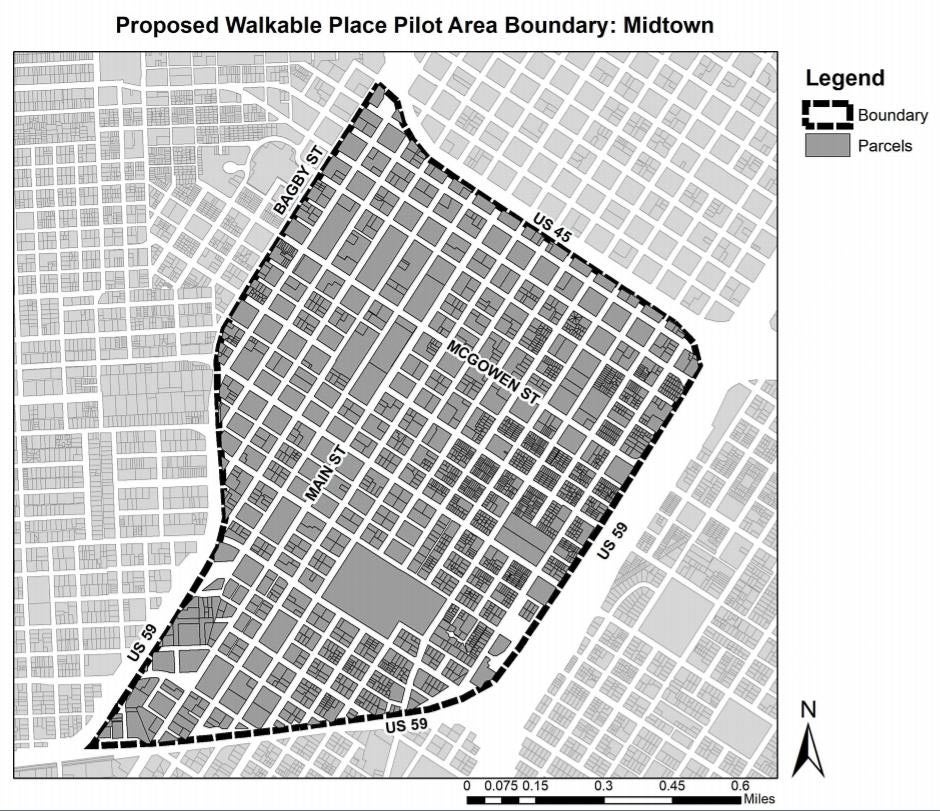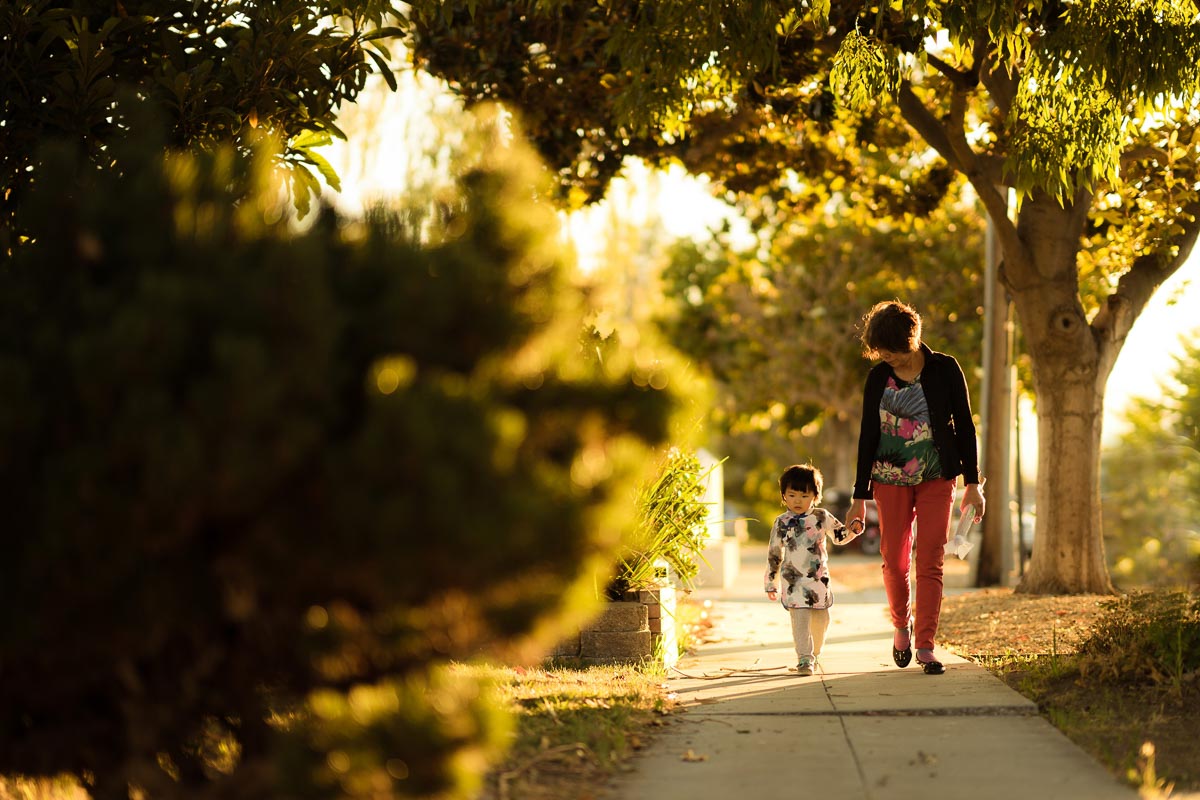Created in 2017, the Walkable Places Committee aims to create new, unique development regulations to include a variety of elements that encourage walkability and promote better, more human-scaled public spaces.
Midtown, Emancipation Avenue and Hogan St. are the first pilot areas and the committee recently released its first summary report of proposals (attached below) that address specific changes to the area to promote increased walkability.
"Typically we'd focus on a single street—like Emancipation or Hogan but Midtown is unique because of the emphasis of the innovation core and the investment of the Ion," Baldwin said. It's also the largest geographic area the committee is tackling.

Image from the Walkable Place Committee, City of Houston.
Ultimately, Baldwin aims to have urban planning rules, like minimum sidewalk size or mandatory parking regulations, to be contingent on the area-specific development being built.
"We have a set of rules and regulations," Baldwin said. "And to think that the Chilies on Kingwood Drive should be treated the same as Smith and McGowen is just hard to make any sense at all. This one-size-fits-all—the city's too large for that kind of approach."
This interview has been edited for clarity and length.
Throughout 2018, the committee hosted a series of public meetings. How much did those meetings influence the two new reports the committee's produced?
The public wants a more walkable and safe city for everyone.
There were some things that the public continually brought up (like sidewalk investment from the city—currently homeowners and business owners are responsible for sidewalk repairs). If we had a funding source, we would do or recommend other things, but there was none, so we are only able the change the development code to create the same desired effect through investment from the private sector.
What is the primary concern or pushback from the committee's proposals?
The community would have liked for us to have gone even further. The most contentious thing is, what is this going to do to the residential neighborhoods adjacent to an area—specifically with parking?
The primary goal is not to adversely impact anyone but to provide for greater flexibility and to be able to preserve the pedestrian realm so that it's safer for people to go to and go through.
But my real estate perspective shows that the people who live adjacent to these urban environments are willing to put up with those reduced parking regulations in order to have a safer pedestrian realm and something to walk to.
What is the primary mission of the committee in these reports and future plans?
There's no way our city will ever be effective using one-size-fits-all. This [report] is allowing us to take our development code and tailor it to the environment in which it is located. This is a win-win for everyone.
In a city without zoning, this is giving you a way to get the largest amount of flexibility into the development code so that there is some certainty for development in the neighborhoods.
A lot of people are scared to walk in Houston. How does the committee challenge or plan to change this perspective?
We can inadvertently reduce the speed with which people drive by enhancing the pedestrian realm.
By city code, West Gray and Montrose have the same speed limit. Now you and I both know they drive much faster on Montrose than they do on West Gray. Why? Because we create these large lanes without much interruption and we expect people to drive 30 on Montrose, but when there are fewer cars there, they're likely to drive 45 or 50, which is dangerous for drivers, cyclists and pedestrians.
But we will slow down that traffic on Montrose if the people have something to look at. If there's a yoga shop on the first floor or outdoor seating in a restaurant, or a large amount of grass and you see the CrossFit or Soul Cycle class going on inside, then you will drive slower.
It's just a natural phenomenon and Houston needs to get prepared to drive slower in the urban core.
What's a great example of a walkable place in Houston to you?
Look at Reil or Roost or Vibrant. Vibrant is exactly what you want! Green transparency, open dining, parking in the back and the adaptive reuse of an old building. That's exactly what we're trying to get.
I believe this will get you the ability for small businesses to compete now and the preservation of using more and more of the historic structures before we tear them down to build another strip mall. I personally, truly, passionately believe that.
What is a bad example of a walkable place in Houston for you?
Is there anything about Snap Kitchen [on Montrose Blvd.] that's walkable? Or where Canopy used to be? No. Wouldn't it be safe for people driving and walking on Montrose if those buildings were pushed close to the street?
It's more interesting to walk by. It's more interesting to drive by. It slows everyone down. It's good for the neighborhood.
With these two report summaries out, what are the next steps now?
So our proposals are modifying a number of different ordinances. You're impacting the parking ordinance 26. You're doing your sidewalks in 19. You're doing development in 42. So there are revisions that have to take place.
Hopefully what we're trying to do is get all the revisions to the city council sometime in the early fall so these changes can be adopted as quickly as possible, but this probably is still going to take until late September or October before it gets into the council agenda for a vote.
We're trying to prove to the world that in certain, context-sensitive areas, these regulations are truly the best thing. But it's a big ship that's the City of Houston and it doesn't turn very quickly. But this is heading in the right direction in these urban, context-sensitive areas.

